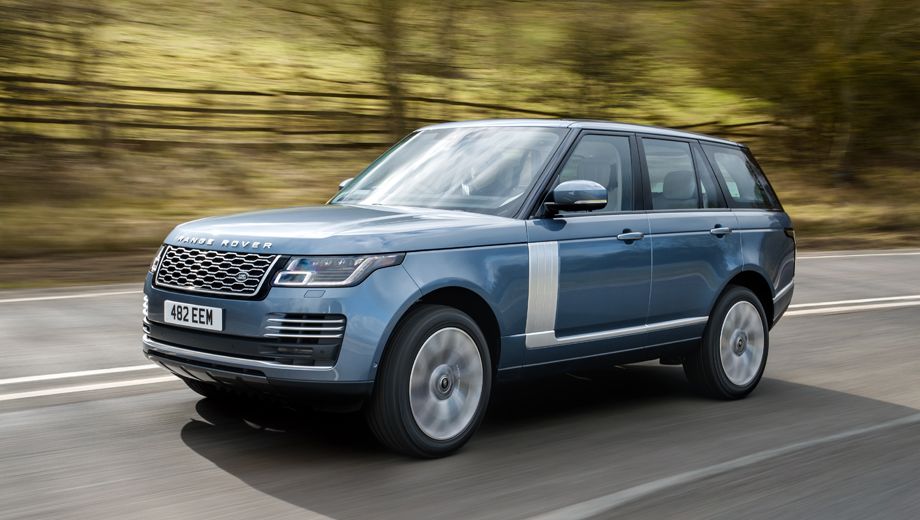What we’re driving: Range Rover Vogue P400e
What it costs: $210,000 (as tested, $232,155)
Why we’re driving it: Beloved by country squires and Royals alike, Range Rovers have been wafting across the world’s paddocks and back-roads for nearly half a century. But the luxury off-roader’s generous dimensions and predilection for V8 power has made it an easy whipping boy for those who see it as epitomising the worst excesses of C02-belching 4x4s.
Enter the Range Rover Vogue PHEV, the Brit marque’s first foray into electrification, which treads far more lightly on this blue planet than any of its predecessors.
What it costs: If, like me, you’ve become just a tad confused by Jaguar-Land Rover’s promiscuous application of the Range Rover badge to an ever-expanding number of new models, then it may help clarify things to state that this review focuses on the Real McCoy.
Forget your Evoques, Velars and Sports, this is about the original imperious flagship of the fleet, pricing for which starts at a princely $190,000 and steps up through 13-variants to the staggeringly expensive SVAutobiography LWB, at $398,900.
Within that lineup the Vogue P400e we’re testing here costs a relatively thrifty $210k.
On the outside
Like a well-cut Savile Row suit, the Rangie knows that certain attributes never go out of fashion.
Hence why 49 years after the original we’re still beguiled by the trademark clam-shell bonnet, the floating roof and the distinctive low belt line that give this luxury 4x4 its enduring profile.
Land Rover’s chief designer Gerry McGovern admits to being “obsessed with reduction, with getting rid of the unnecessary,” and that’s evident in the Vogue’s uncluttered graphics, flush detailing and clean lines.
The chiselled all-aluminium body sits purposefully on handsome 20-inch 12-spoke alloys, its diamond-mesh grille canted back towards the screen, flanked by futuristic-looking LED headlights.
Bold gill-like strakes aft of the front wheels speak to power and prestige, while gloss-black pillars seemingly suspend the tapered roofline in mid-air.
Under the bonnet
The Range Rover PHEV isn’t a ‘pure’ electric per se but sits somewhere on between a Tesla EV and a hybrid-electric, like the Toyota Prius.
The ‘P’ in its PHEV nomenclature stands for plug-in, meaning its lithium-ion battery can be charged to deliver a meaningful 49km of pure electric driving, after which it will revert seamlessly to its gasoline engine.
This feat is achieved by combining a meaty 221kW 2.0-litre turbo four-cylinder petrol engine, with a 105kW electric motor and 13.1kWh battery. The resulting combined outputs of 297kW and 640Nm are right in the ballpark of rivals like Audi’s hybridized Q7 e-tron and BMW’s quad turbo X5M50d.
Power is channeled through an excellent eight-speed ZF automatic and permanent all-wheel drive system, propelling the 2.6-tonne Rangie to 100km/h in a brisk 6.9 secs; quicker than everything in the lineup bar its stonking supercharged 5.0-litre V8 siblings.
What’s more, thanks to its hybrid drivetrain, this two-and-a-half-tonne beast manages to do so while delivering combined-cycle fuel economy of a mere 3.2L/100km compared with 12.8L/100km for the supercharged petrol V8 versions.
On the inside
The Rangie’s interior is the stuff vegan nightmares are made of, clad as it is from pillar to pillar and dash to derriere in lavish, aromatic leather. Make no mistake – many cows have perished so that Sir can be comfortable.
It’s roomy too, thanks to its generous wheelbase and a long-standing and lofty disdain for fitting third rows. Stretch out in the beautifully trimmed second row with thick wool carpet underfoot and enjoy the view of passing fields and farms and contented cows (who don't realise that you may be sitting on their cousin).
A chunky centre-console bisects the generously proportioned cabin, its glossy piano black surface embellished with gleaming strips of brushed alloy. Press the start button and a rotary PRNDL dial emerges 007-like from the flat upper surface of the console.
A configurable 12-inch display with crisp, clear graphics sits in the main instrument panel, while at middle are two inter-linked high-definition 10-inch touchscreens.
On the road
While Range Rover's design, powertrains and fit out have all changed dramatically over the decades, one thing that has never altered is the Brit off-roader’s ability to waft along with a stately, long-legged grace.
You ride imperiously "above it all" on pliant air-sprung suspension, in a commanding driving position, surrounded by an extensive glasshouse that makes every drive feel both panoramic and just a bit special.
The quietness of the drivetrain adds to already high levels of refinement. It’s all extremely well integrated and there few cues to the fact it merges ICE and electric power. At low speeds the brakes are a little grabbier than ideal, while drivers with a bit of ‘feel’ will pick when the internal combustion engine gently kicks in.
On the plus side, it gets the heck out of Dodge with impressive zeal, the drivetrain’s default parallel hybrid mode combing the two drive systems for impressively brisk acceleration.
In summary
This new Range Rover has lost none of the marque’s ability to waft its occupants along in unparalleled comfort and style, even if it has sadly lost its once-trademark V8 note.
This significantly more frugal PHEV version gives up none of the comfort, performance, off-road capability or luxury the marque is renowned for, while thumbing its Capitalist snout at its placard-waving, hair-shirt-wearing detractors.












Qantas - Qantas Frequent Flyer
10 May 2012
Total posts 134
Great writing Ged. Love mine. But an older V8 Vogue. Still gorgeous though!
Hi Guest, join in the discussion on Road test: Range Rover's Vogue P400e plug-in hybrid